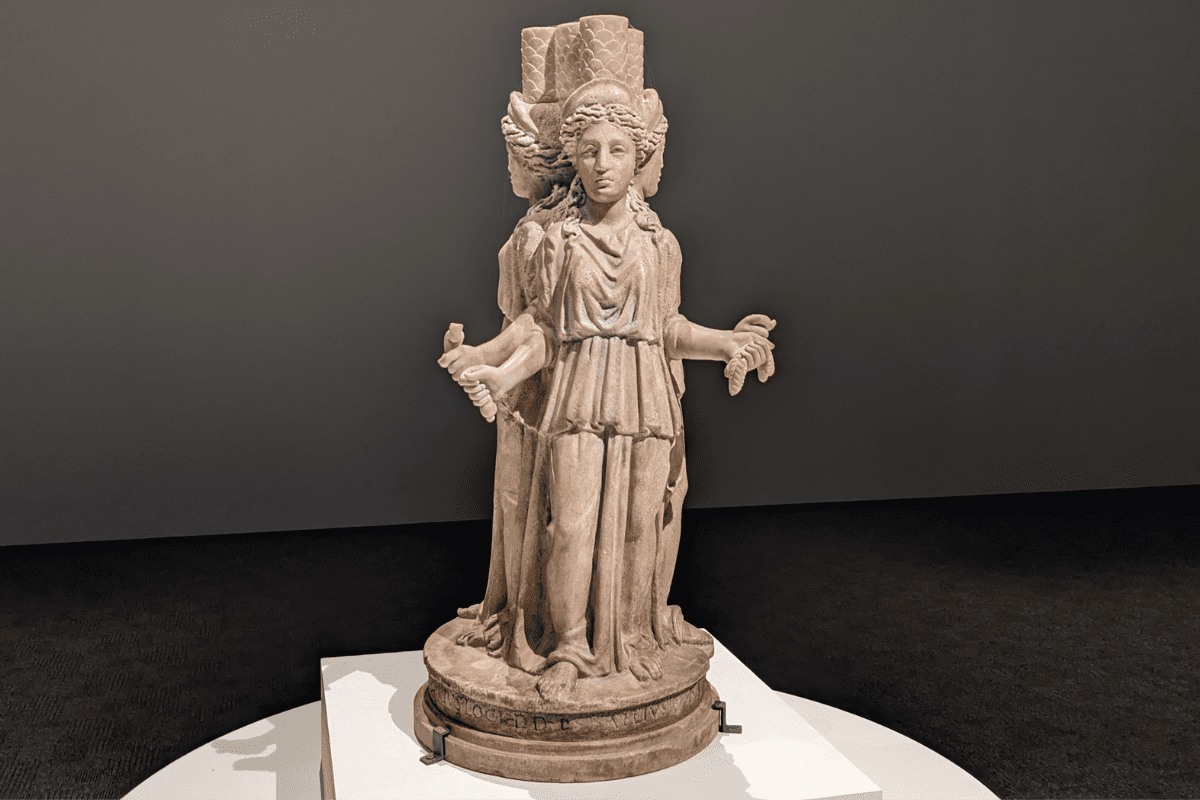When I first heard about ‘Feminine power: the divine to the demonic‘, a show at the British Museum that opened in May 2022, I considered whether flying from Melbourne to London to see it was excessive. Thankfully, I didn’t have to answer that question. A few months after it closed in September 2022, the exhibition came across the pond. It landed at the National Museum of Australia in Canberra as ‘Feared and Revered: Feminine Power through the Ages‘. It was time for a short holiday.
My husband and I spent a long weekend in Canberra, and I’ll tell you more about that in another blog entry. This one is dedicated to the ‘Feared and Revered: Feminine Power through the Ages’ exhibition.
‘Feared and Revered: Feminine Power through the Ages’ showcases the diversity of female spiritual beings worldwide from about 2800 BCE to the present. It features goddesses, demons, witches, and other female figures organised around five broad themes: creation and nature; passion and desire; magic and malice; justice and defence; and compassion and salvation.
In Canberra, the show is almost twice as big as in London, with nearly 160 objects. It includes familiar Greek, Roman, and Egyptian goddesses, the Hawaiian volcano goddess Pele, the Bodhisattva Guanyin, and the Judeo-Christian figures Lilith, Eve, and Mary. There’s also a copy of the Malleus Maleficarum and the Witches’ Sabbath, a woodcut print from the end of the Middle Ages. The exhibition also includes modern pieces such as Judy Chicago’s Creation from 1985. It is supplemented with art by Australian First Nation artists, plus a costume worn by Kylie Minogue in her 2011 Aphrodite: Les Folies tour.
These photos are a few of my favourites. For more photos and videos, follow me on Instagram.
Feared and Revered: Feminine Power through the Ages
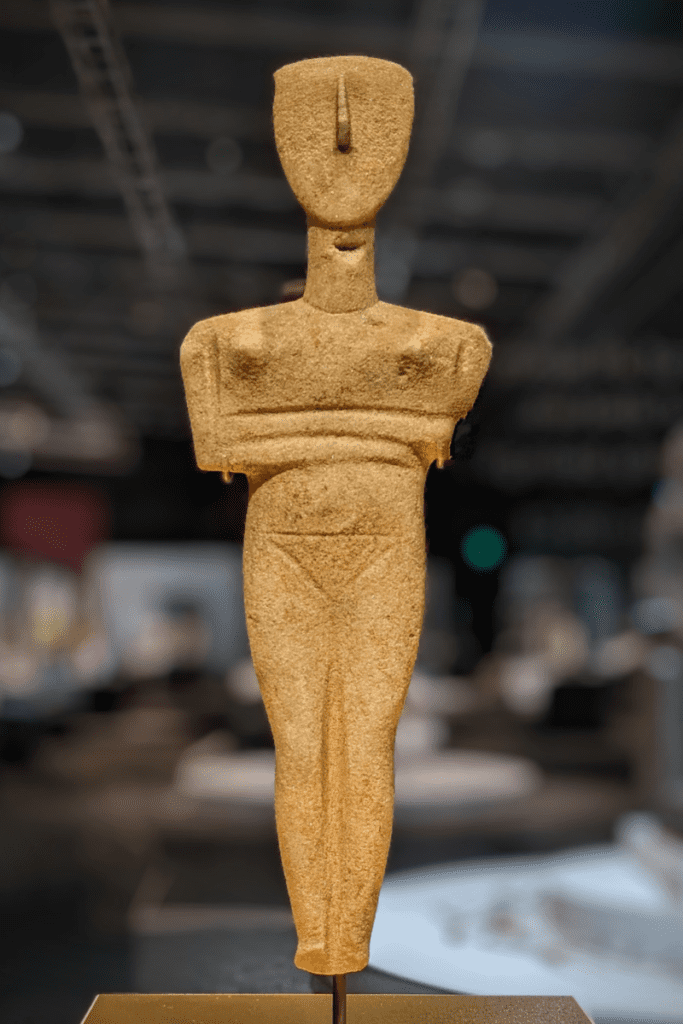
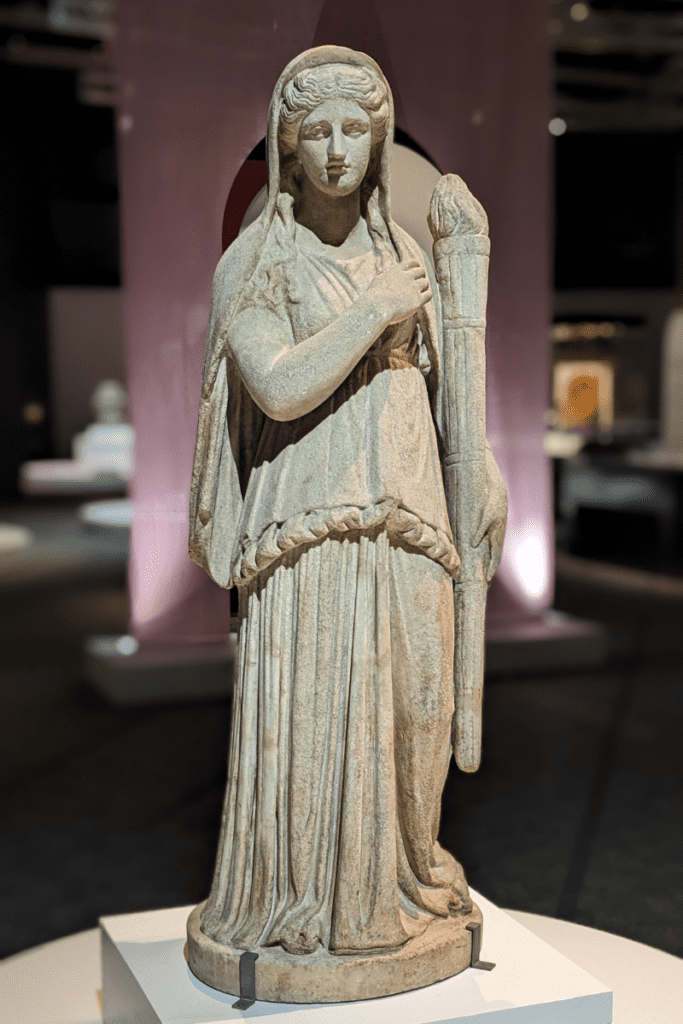
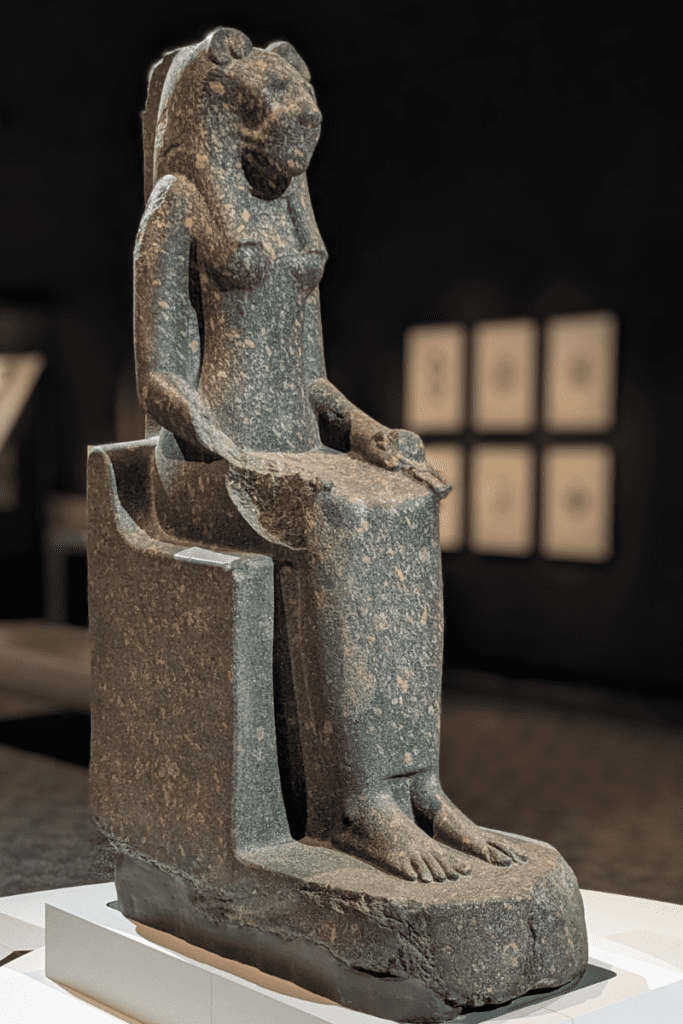
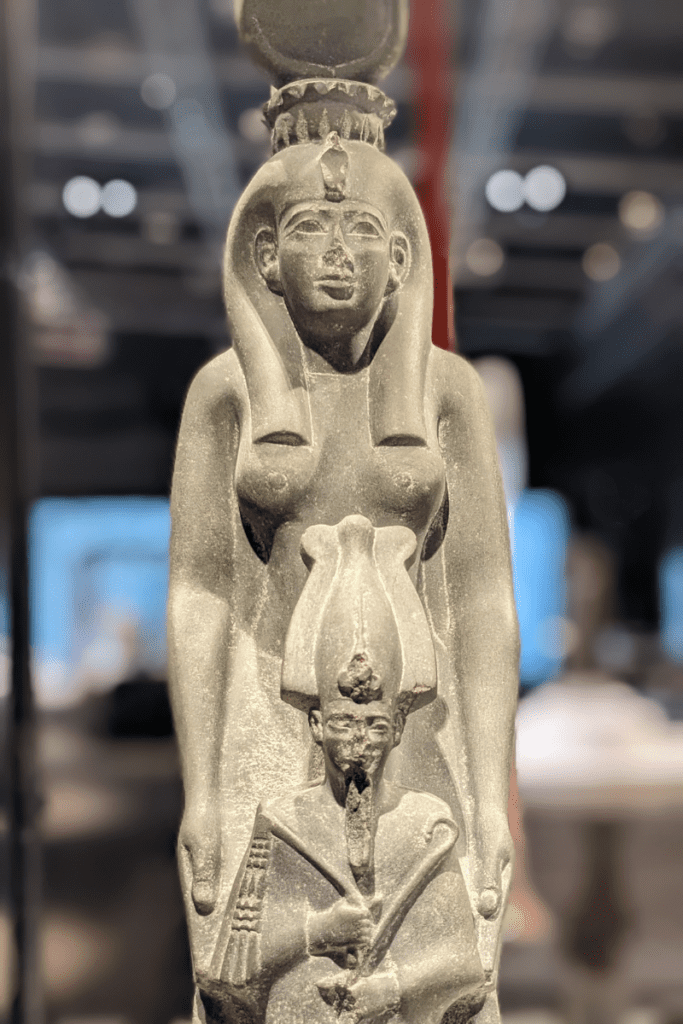
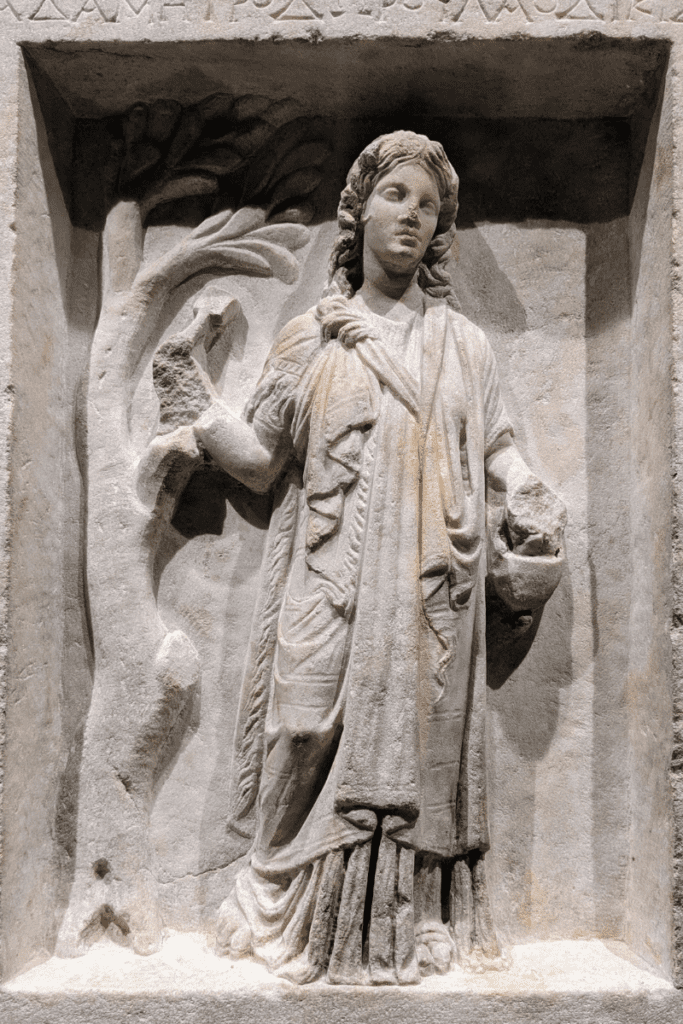
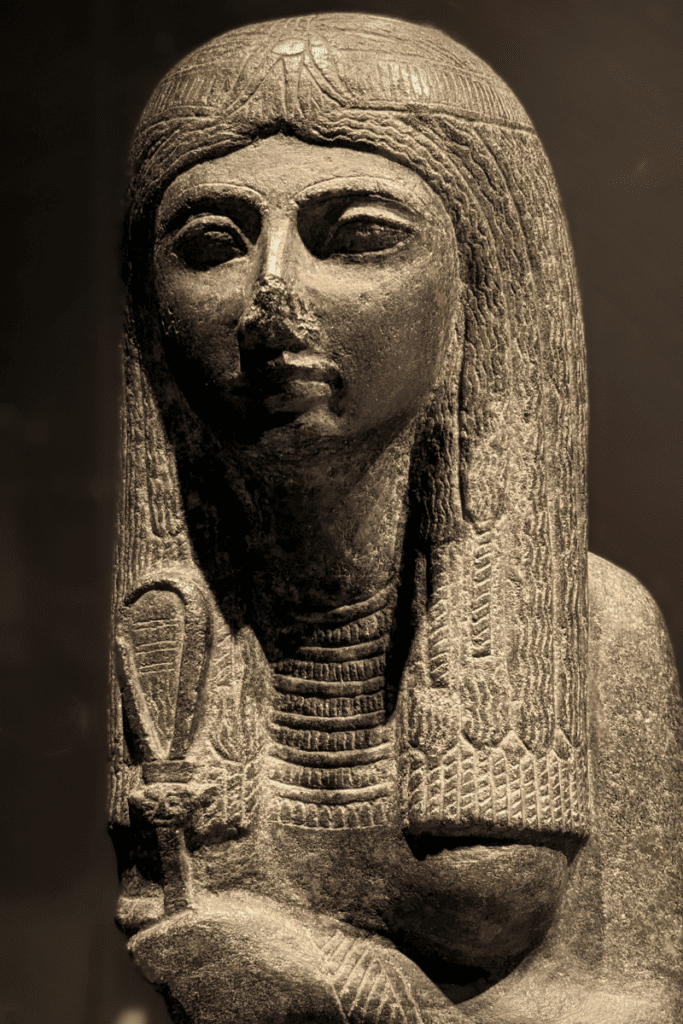
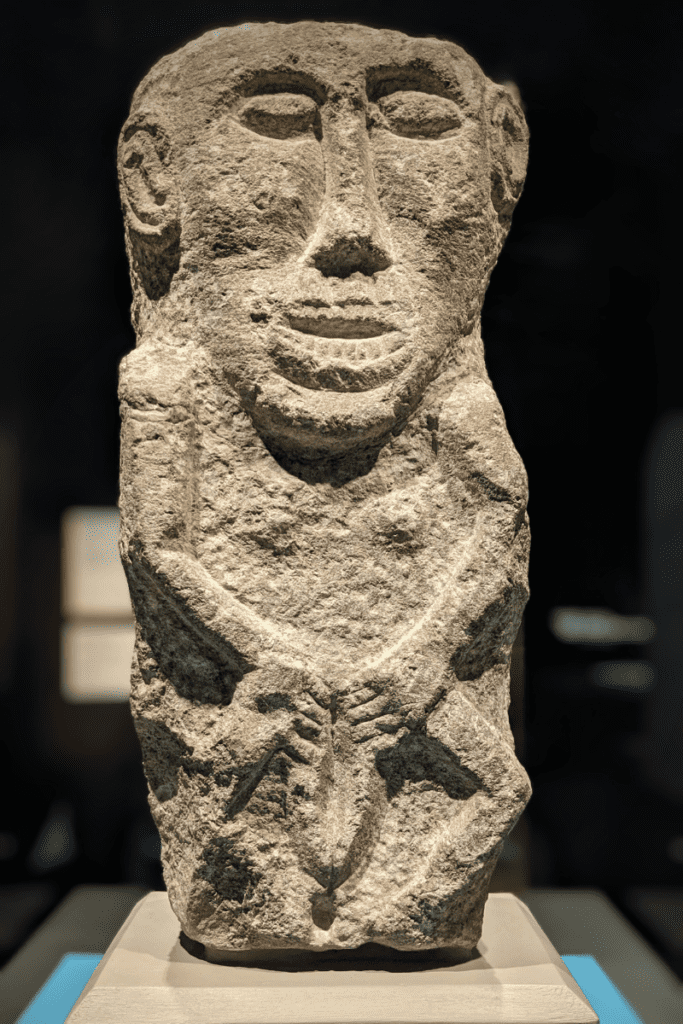
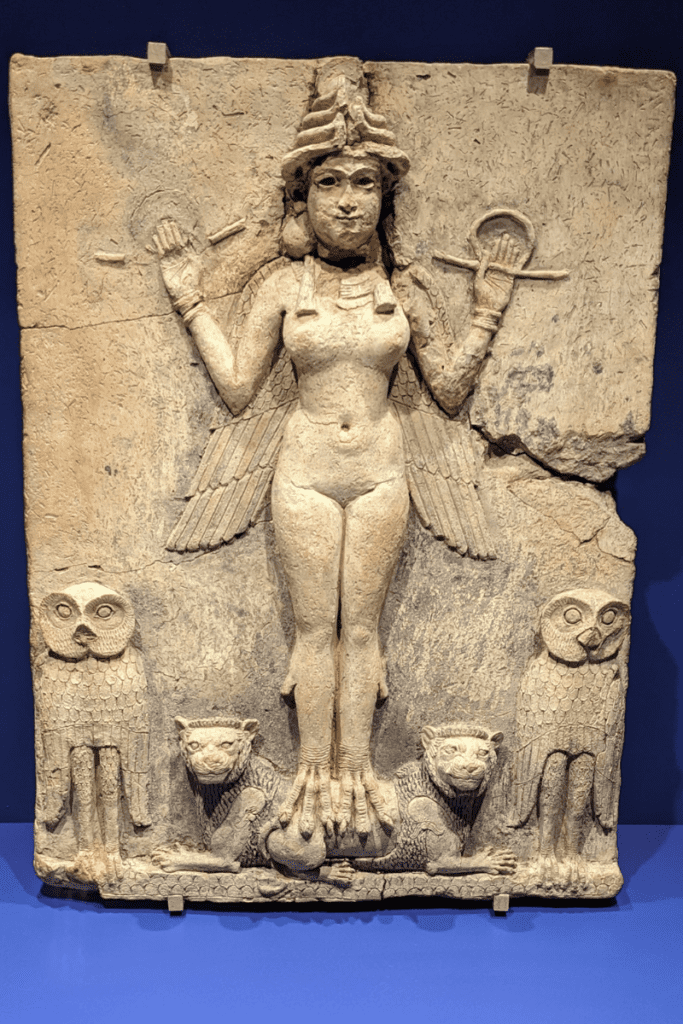
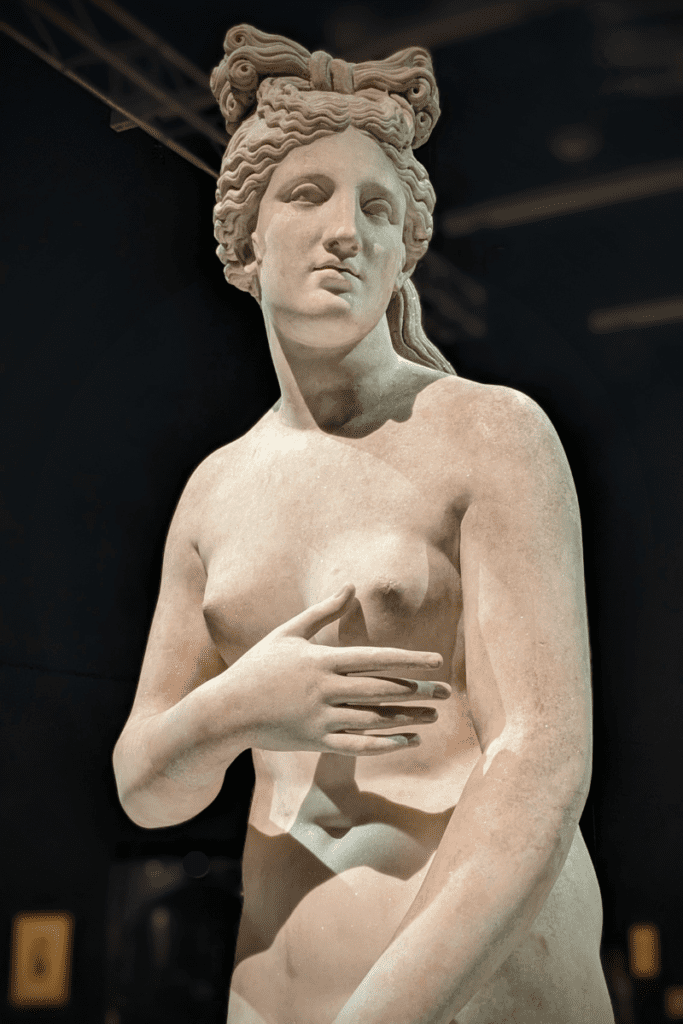
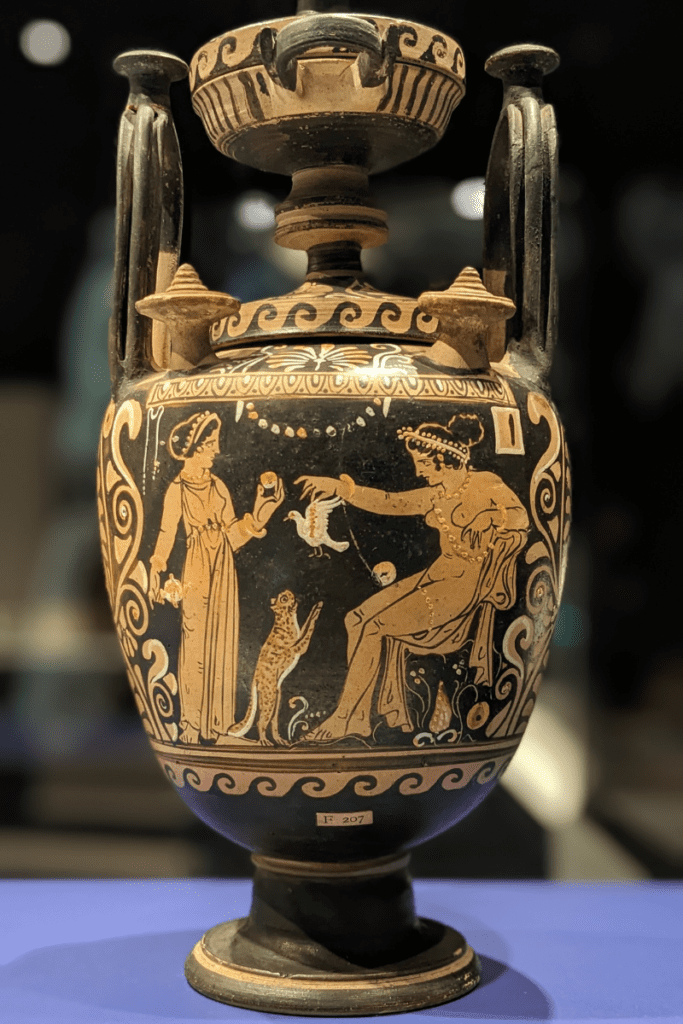
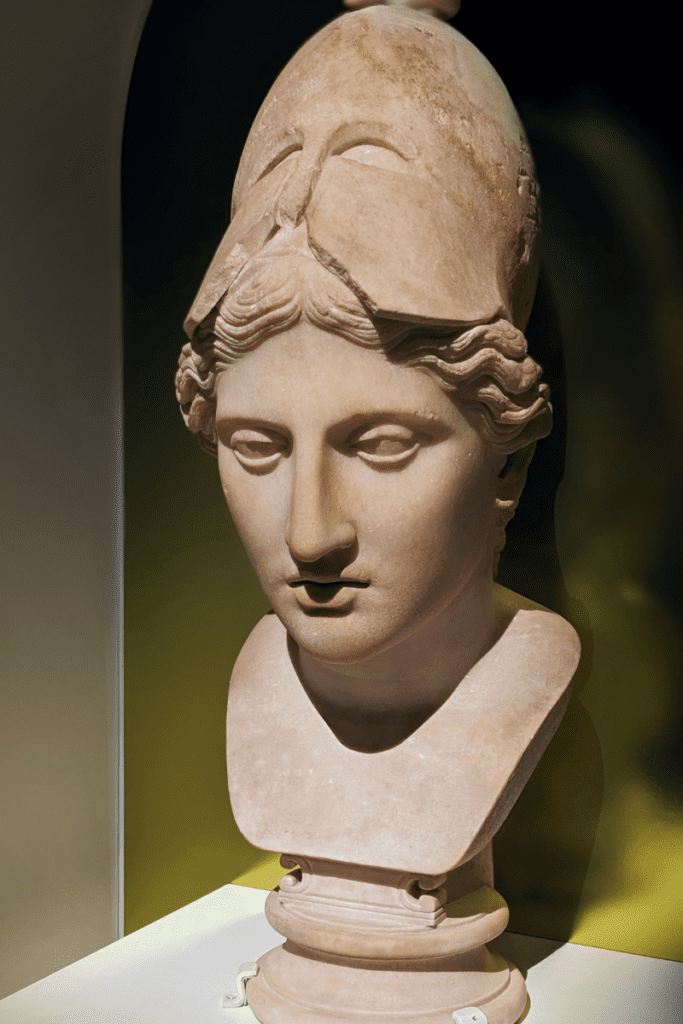
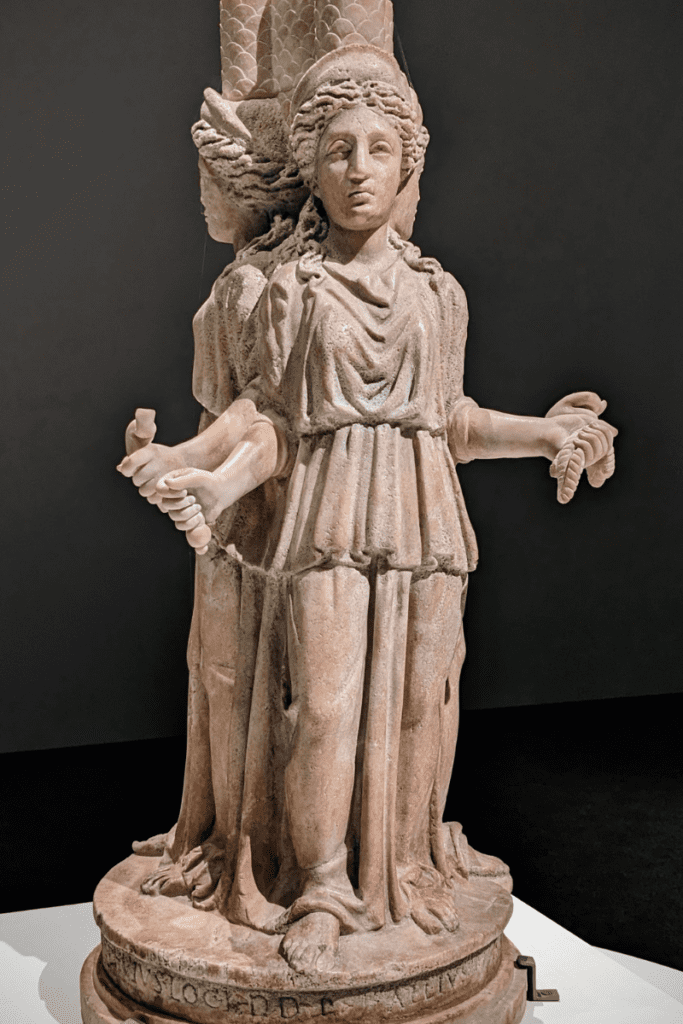
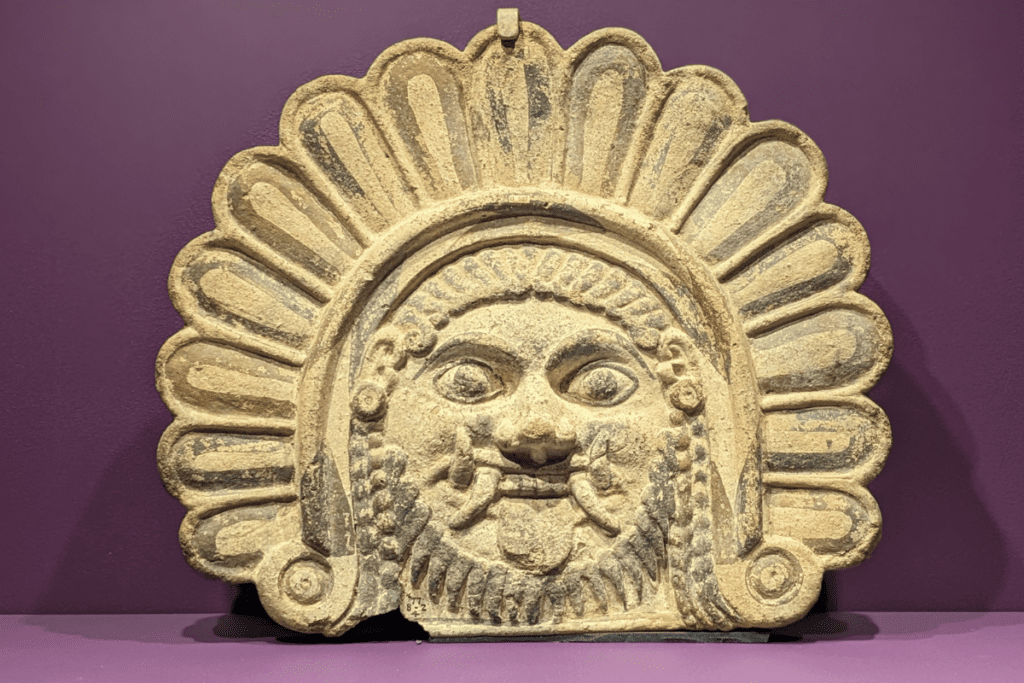
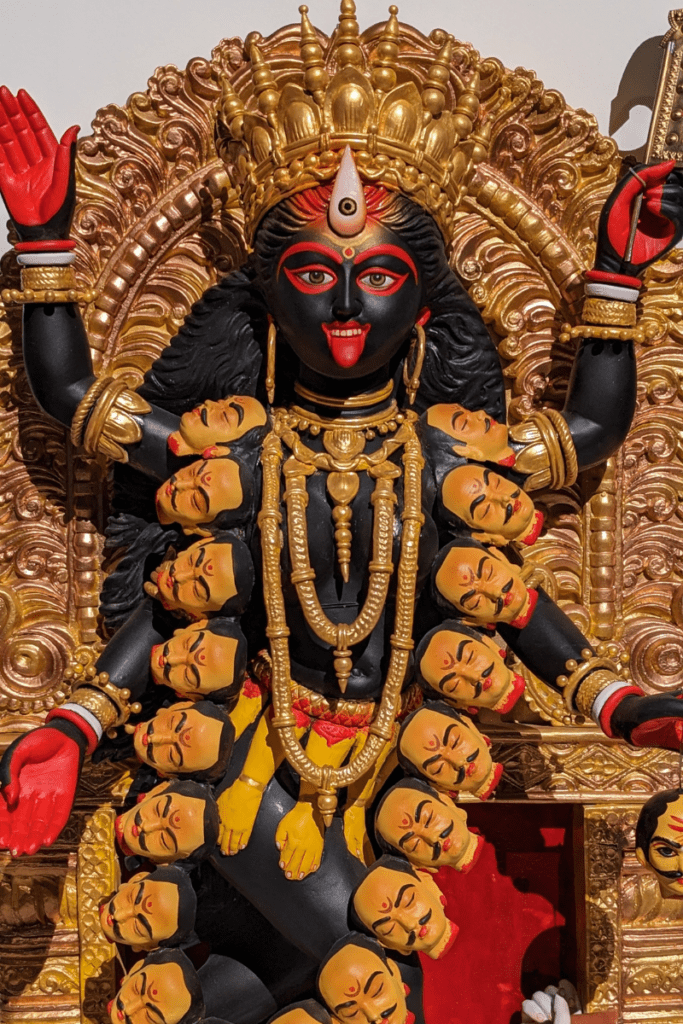
As a Pagan and a devotee of several goddesses represented here, attending an exhibition like this is almost a pilgrimage. I’m always excited to see ritualistic objects made by believers for a community of believers. Hundreds, even thousands, of years later, they are intriguing; some still feel full of energy.
From a feminist perspective, the exhibition raises many questions. It dances around stereotypes and neutrality. It fails to consider, for example, what these powerful feminine figures mean within patriarchy and how men and women perceive feminine power differently. Those are big questions for us to continue thinking about.
‘Feared and Revered: Feminine Power through the Ages‘ is at the National Museum of Australia in Canberra until 27 August.

